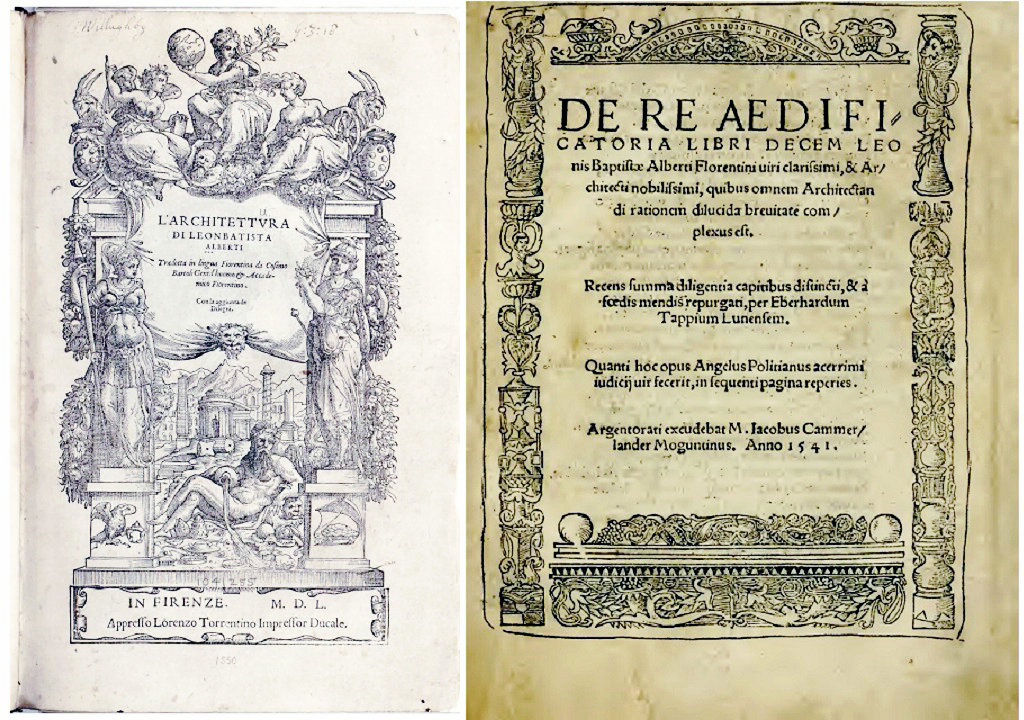De Re Aedificatoria


De re aedificatoria (On the Art of Building) is a classic architectural treatise written by Leon Battista Alberti between 1443 and 1452. Although largely dependent on Vitruvius’s De architectura, it was the first theoretical book on the subject written in the Italian Renaissance, and in 1485 it became the first printed book on architecture. It was followed in 1486 with the first printed edition of Vitruvius.
Book
Alberti’s Ten Books consciously echoes Vitruvius’s writing, but Alberti also adopts a critical attitude toward his predecessor. In his discussion, Alberti includes a wide variety of literary sources, including Plato and Aristotle, presenting a concise version of the sociology of architecture. De re aedificatoria is subdivided into ten books and includes:
Book One: Lineaments
Book Two: Materials
Book Three: Construction
Book Four: Public Works
Book Five: Works of Individuals
Book Six: Ornament
Book Seven: Ornament to Sacred Buildings
Book Eight: Ornament to Public Secular Buildings
Book Nine: Ornament to Private Buildings
Book Ten: Restoration of Buildings
In his survey of desirable floor plans for sacred buildings— “temples” in his phrase—Alberti begins with the ideal form of the circle, which is expressed in numerous examples of Nature. Nine ideal centrally-planned geometrical shapes are recommended for churches; besides the circle he lists the square, the hexagon, octagon, decagon and dodecagon, all derived from the circle, and, derived from the square, rectangles that exhibit the square and a half, square and a third and double square, all of which have enharmonic parallels in music. Chapels add small geometric figures to the basic circles and polygons to give a great variety of floor plans, in which each geometrical figure retains its clear unity and simple ratios that bind all elements of the plans and elevations into a harmonic unity.
De re aedificatoria remained the classic treatise on architecture from the 16th until the 18th century.
Cultural meaning and critical luck
The work, considered the most significant architectural treatise of humanist culture, was written in Latin and was addressed not only to a specialist audience but also to the public educated in humanistic education: it was written on the model of the ten books of the treatise De architectura di Vitruvio, then circulating in manuscript copies, not yet philologically correct and not translated into vernacular. Alberti also had a critical attitude towards the model of Vitruvius, and in particular on the language rich in vocabulary or non-Latin vocabulary elements, which made the meaning of many passages of De architectura obscure.
The work was at the same time an attempt to make a critical re-reading of the Vitruvian text and to realize the first modern architectural theory treatise, in which to explain how to construct buildings (and not as if they were constructed) without resorting to images, but fixing them with words the concepts and instructions that became so autonomous and absolute compared to the various editions, where instead the images could also come to be missing or be deformed.
There are also quotations from Aristotle and Plato, among others, which briefly also frame the function of architecture sociologically.
The De re aedificatoria was not printed during the life of Alberti, who had tried several times to entrust his works to this new means of diffusion. The treaty therefore had a fairly limited spread. The treaty was printed, thanks to the patronage of Lorenzo the Magnificent and edited by Poliziano , only in 1485, however, remaining a work reserved only for the environments captured because of being written in Latin in an era when it was imposing the vulgar. A greater diffusion took place after the Italian translation published in 1546 and above all that 1550, by Cosimo Bartoli. Later the treaty was rediscovered and reprinted during the eighteenth century.
The original is kept in the library of the Chapter of the Cathedral of Olomouc, in the Czech Republic .
Source From Wikipedia